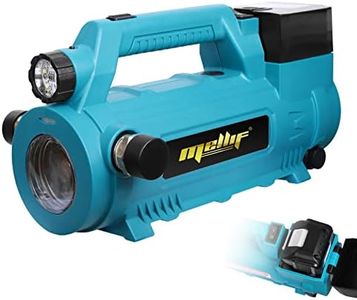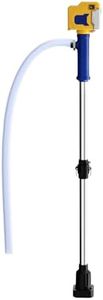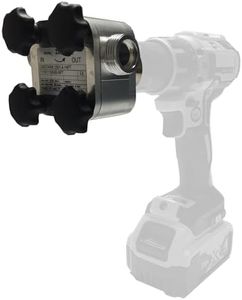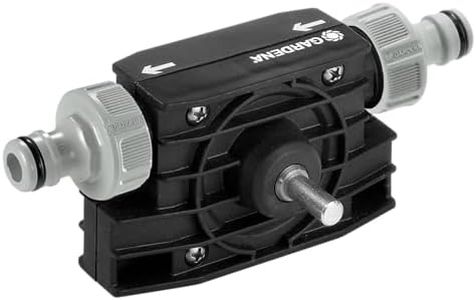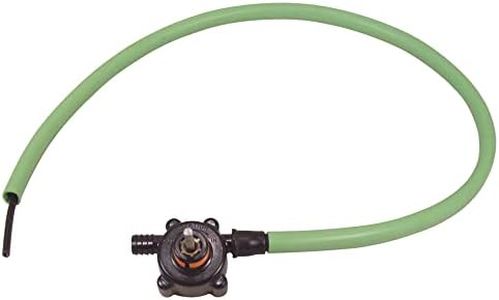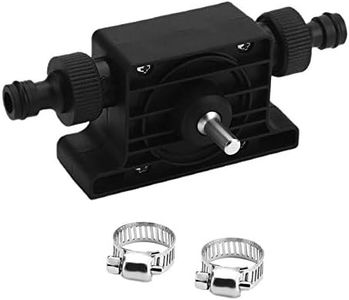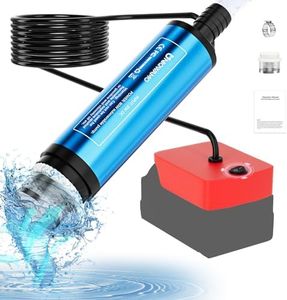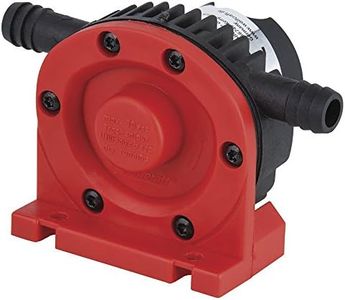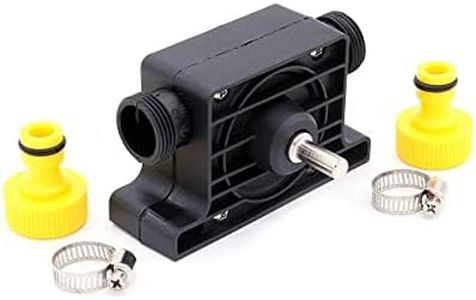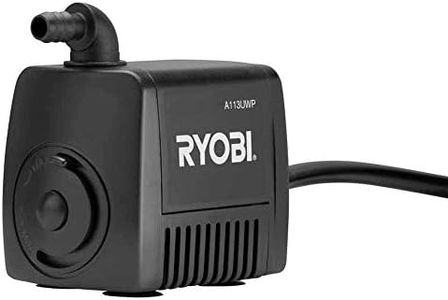We Use CookiesWe use cookies to enhance the security, performance,
functionality and for analytical and promotional activities. By continuing to browse this site you
are agreeing to our privacy policy
10 Best Drill Pump
From leading brands and best sellers available on the web.Buying Guide for the Best Drill Pump
Choosing a drill pump can feel overwhelming if you're new to them, but understanding your needs and the key features can help you make the right decision. Drill pumps attach to your standard power drill and use its spinning action to move liquids, making them handy for small tasks like draining water from aquariums, emptying clogged sinks, or transferring liquids between containers. The secret to getting the best results lies in matching the pump’s specs to the types of jobs you plan to tackle. Let’s walk through the main features you should consider and what they mean for your use.Flow RateFlow rate tells you how much liquid the pump can move in a certain amount of time, usually measured in gallons per minute (GPM) or liters per minute (LPM). It’s important because it determines how quickly you can complete a task. For small, occasional jobs like draining a sink or aquarium, a lower flow rate (around 3-5 GPM) could be enough. For larger volume or quicker work, look for higher flow rates (up to 10 GPM or more). Consider the kinds of tasks you expect to do most often: if you want quick transfers or have big jobs, pick a model with a higher flow rate.
Maximum Head (Lift Height)The maximum head or lift height indicates how high the pump can move water from the starting point. It’s measured in feet or meters and matters if you intend to pump water uphill or to a higher container. If you’re just moving fluids across a flat surface, a lower head (about 6-10 feet) will do. But if you need to pump up from a basement or to a higher tank, seek a model with a higher head. Decide where you’ll mostly transfer liquids and make sure the pump’s maximum head fits your needs.
Material and Build QualityMaterial and build quality tell you how well the pump can handle wear and certain types of liquids. If you need to pump only clean water, standard plastic models might be enough. For more demanding jobs, such as pumping mild chemicals or hot water, stronger materials like metal or chemical-resistant plastics are better. Consider what liquids you’ll transfer and how often you’ll use the pump to decide whether you need something basic or more rugged.
Inlet and Outlet SizeThe inlet and outlet size refers to the size of the hoses or pipes that attach to the pump, typically noted in inches or millimeters. This matters because larger openings allow more water to move quickly, while smaller sizes work for tighter spaces or slower flows. For everyday household jobs, 1/2-inch to 3/4-inch sizes are common. If you plan to use thicker hoses for rapid transfer, pick accordingly. Think about the containers or plumbing you’ll connect to, and choose a pump that matches your hose and flow needs.
Drill CompatibilityDrill compatibility means considering the type of drill you have since the pump uses the drill’s power to operate. Most drill pumps work with standard corded or cordless electric drills, usually fitting around a 1/4-inch or 3/8-inch drill chuck. The power of your drill affects the pump’s performance—the stronger your drill, the better the pumping action. Make sure your drill matches the pump’s requirements, and if you have a low-powered or battery-operated drill, expect more moderate performance.
Self-Priming CapabilitySelf-priming refers to the pump’s ability to start moving water without having to fill it with water first. Some pumps are self-priming and will start working with air in the line, while others require manual priming. This feature adds convenience, especially if you plan to move the pump between different jobs frequently or want to minimize effort. If easy start-up is a priority, look out for self-priming in the pump description.
